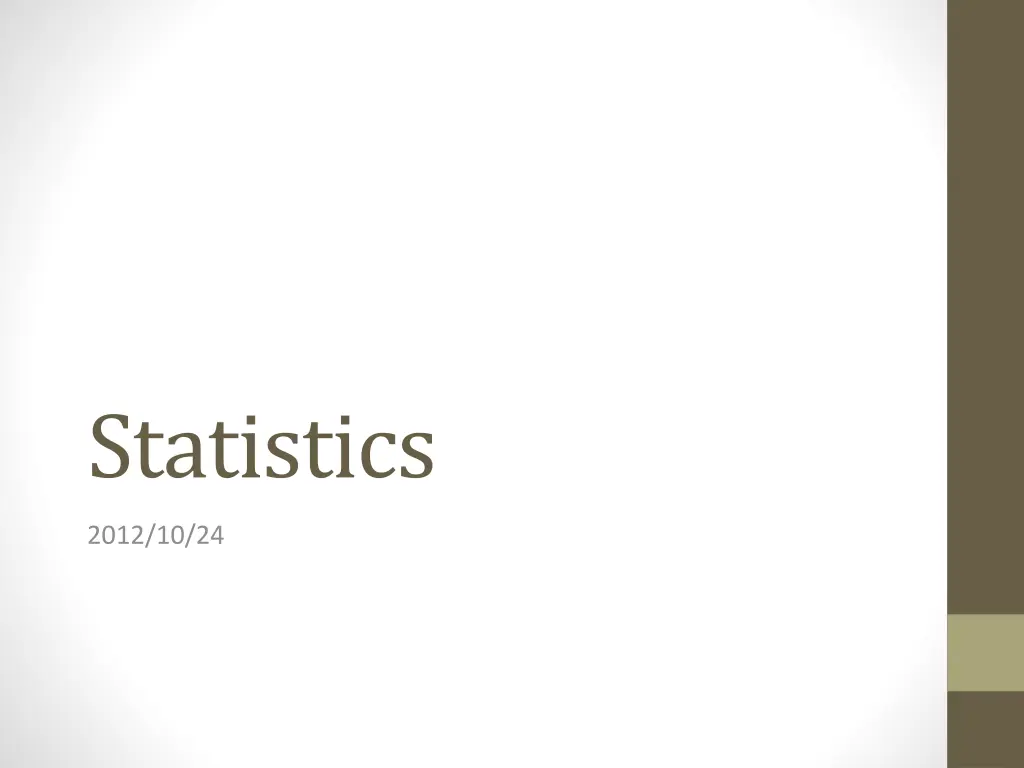
Understanding Conditional Probability and Expected Values in Statistics
Explore various concepts in statistics such as conditional probability, posterior probability, expected values, binomial distribution, and more. Dive into calculations and applications to enhance your statistical knowledge and problem-solving skills.
Download Presentation

Please find below an Image/Link to download the presentation.
The content on the website is provided AS IS for your information and personal use only. It may not be sold, licensed, or shared on other websites without obtaining consent from the author. If you encounter any issues during the download, it is possible that the publisher has removed the file from their server.
You are allowed to download the files provided on this website for personal or commercial use, subject to the condition that they are used lawfully. All files are the property of their respective owners.
The content on the website is provided AS IS for your information and personal use only. It may not be sold, licensed, or shared on other websites without obtaining consent from the author.
E N D
Presentation Transcript
Statistics 2012/10/24
Before we start Google!
Question 1 Let event E be waking up early, L be waking up late, V be waking up very late, O be on time, X be not on time Conditional Probability [P(A|B)] (a) Pr(X) (b)(c)Posterior Probability [Conditional Probability of given X] P(E|X), P(L|X), P(V|X) (d) Given O
Question 4 VERY IMPORTANT!!! E[X] = , E[ ] = E[x2] E[x]2 E[(x - )2]
Question 2 E[X] = [Pr(X) * X] E[a + bX] = a + b * E[X] Var(a + bX) = (b)2 * Var(X) => absolutely positive E[X2] = [Pr(X) * X2] Var(X) = E[X2] - E[X]2
Question 3 (a)(b) need to calculate carefully by yourself Since X, Y are independent: (c)E[aX+bY] = a * E[X] + b * E[Y] (d)E[XY] = E[X] * E[Y] (e)Var(X+Y)= Var(X) + Var(Y) 2Cov(X,Y) (f)Var(XY) Var(X)Var(Y) (by Q4) = E[X2] * E[Y2] E[X]2 * E[Y]2 = Var(X)E[Y]2+ E[X]2Var(Y) + Var(X)Var(Y)
Question 5 (a) investigation (d) : Continuous, : Discrete (e) expected value of RV is fixed (f) specific one (g) historic data (h) prediction
Question 6 randomly selecting 100 voters Binomial Distribution In Excel: Binom.dist( , , , ) (2003) Binomdist( , , , ) 1 - Binom.dist(50,100,0.45,1) Binom.dist(49,100,0.55,1)
Question 7 Definitely need your calculator or computer (a) Expected profit = Sales Cost Expected Penalty (b) => Calculate probability: Binomial Distribution (c) Expected profit = result in (a) Expected Fine Probability of fine = Pr(defective 10) = 1 Pr(defective < 9)
Question 8 (a) 1 time: (1-p), n times: pn-1(1-p) E[Z] = n * pn-1*(1-p) where n = 1 to tricky calculation: , n (b) Pr(Z z|p) = (1-p)*p^(z-1) where n = 1 to z
Question 9 Discrete random variable Use , not Pr(XY = xy) = Pr(X = x; Y = y) = Pr(X = x) Pr(Y = y)
Question 10 E[(X d)2] = E[X2] 2d + d2 Two ways to prove minimum 1.differential: 2d 2 = 0 has the minimum 2. : E[X2] 2d + d2 = E[X2] + (d )2 2
Question 11 Sum of posterior probability MUST be 1 Original believe = 1/9 Binomial Distribution Definitely need your calculator or computer
